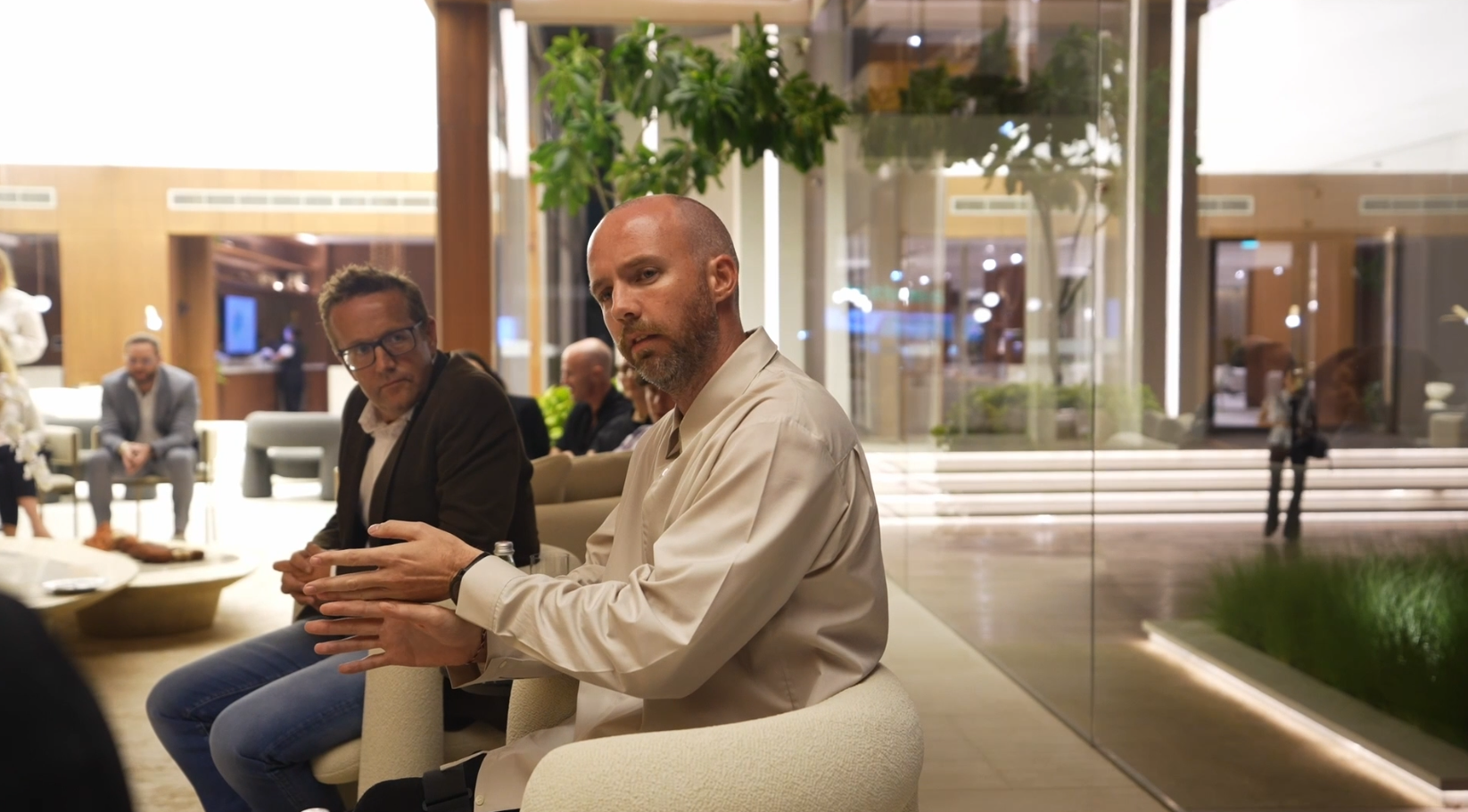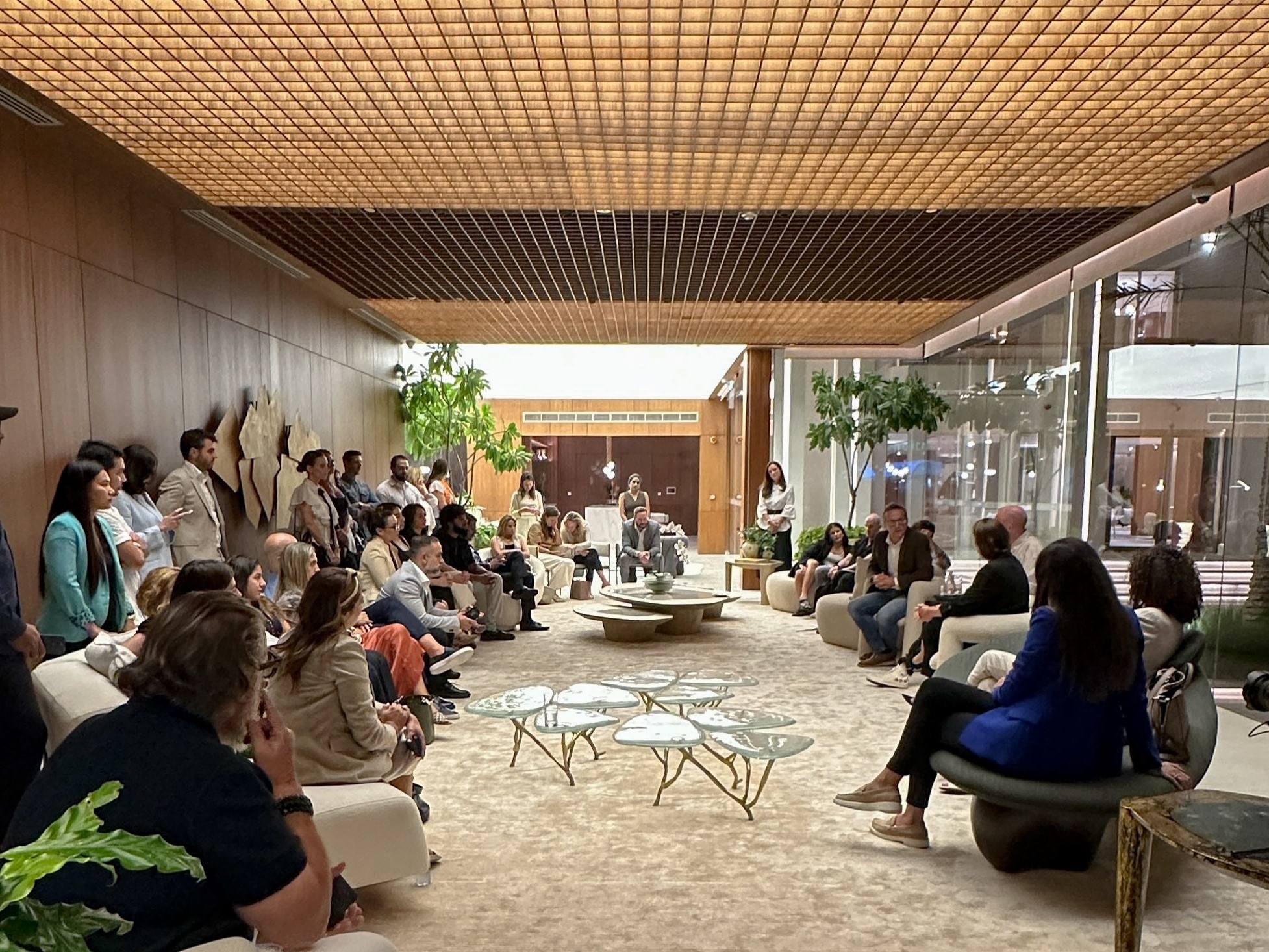Blurring the Lines: How Retail and Hospitality Are Coming Together to Create Immersive Experiences
09 Dec. 2024
Retail in hospitality, emerging trends, design challenges, and the future of these dynamic spaces
In today's fast-evolving design landscape, creating immersive experiences has become a critical focus for retail and hospitality designers alike. Gone are the days of designing spaces purely to serve a function. Today, these environments are designed to engage, inspire, and leave lasting memories.
Altavia ODG, an award-winning retail design consultancy brought together experts from the industry to shed light on this transformative shift. Titled ‘Blurring Lines – Building Experiences,’ the discussion was moderated by Marta Gonzalez, Director of Interior Design Middle East, Africa, India & Turkey at Ennismore, with panellists Robin Rossi, Design Director, Altavia ODG and Tom Gilmartin, Business Development Manager at ALEC FITOUT. Together, they explored how the lines between retail and hospitality design are merging to create unforgettable guest experiences.
Over the last decade, this blending of industries has altered how guests interact with and perceive spaces. Retail is no longer an afterthought in hotels – it has become an integral part of the hospitality experience. Similarly, hotels have adopted retail strategies to offer a branded, holistic journey that encourages guests to connect with the space in more meaningful ways. “Retail design is now merging with the hospitality elements like spa and wellness,” said Rossi. “This significant crossover gives a new vision, with a focus on branding, along with F&B and other facilities wrapped into the experience.”
“When you go to a hotel, you seek an experience, not a mere transaction like when buying a mobile phone,” said Rossi. The retail component has shifted from product sales to becoming an emotional extension of the hotel itself. Spa, wellness, and F&B services have integrated retail elements, creating a holistic environment where guests can purchase products to enhance their stay. This blending of services creates an all-encompassing experience that encourages guests to live and breathe the hotel’s brand.

Trends in Retail-Hospitality Design
New trends are pushing designers to think beyond traditional retail spaces. Rossi pointed out that in the past, retail was often the last thing to be considered in a hotel’s design process. Today, every sensory element counts – from the smell and sounds to the digital touchpoints, all contribute to an immersive experience. Hotels are no longer just places to stay; they’re experiences in themselves, where every detail serves to immerse guests in a story.
“Trends today are leaning towards self-service and boutique experiences,” Rossi said. While high-tech, auto-checkout systems, similar to those in Zara, are becoming more common, there’s still a strong preference for boutique and localized experiences that preserve the human touch. “The people make the experience,” Rossi added. “It’s the human connection that adds warmth to hospitality.”
However, he emphasized the balance that must be struck. For smaller purchases, guests don’t want to queue or deal with slow services. But when it comes to luxury, the slower, more personalized approach works, allowing guests to savour every aspect of the experience.
Gonzalez further elaborated how Ennismore’s brand SO, that is rooted in fashion, integrates retail offering guests the chance to wear and try clothes during their stay. These items can be returned or purchased, allowing for a hands-on experience that deepens the guest's connection with the brand. This innovative approach merges fashion with hospitality, creating a more personal and engaging interaction.
Rossi spoke about the ‘moment of truth’ model – a concept that is applied across industries, including hospitality. It highlights how every interaction, from entering the lobby to taking the elevator, plays a crucial role in shaping the overall experience. The same principles when applied to retail spaces also help in creating an engaging experience. The question that often arises is ‘how do we convert our customers into guests?’
Technology Meets Human Touch
Technology plays a significant role in enhancing the guest journey. Rossi mentioned the digital innovations in spaces like SLS Hotels and how their collaboration with SLS Home or Soho Home integrates online and in-person shopping. Whether it’s in-app ordering or personalized digital experiences, brands are now focusing on selling their story, sometimes the hotel itself becomes the brand.
Still, as digital capabilities grow, the human touch remains essential. In luxury hotels, high-tech concierge services and personalized experiences have become standard. Yet, while some markets – like Japan – embrace the possibility of an entirely contact-less hotel stay, others still cherish personal interactions. Localized settings, like those in Sri Lanka and Bali, celebrate being around people, blending face-to-face service with local craftsmanship to create a sense of place.
“Even with all the technology, you still need someone there to convince you to buy,” Rossi noted. High-end hotels are weaving digital and human elements together, creating an immersive retail experience that is both efficient and personal. However, the challenge remains: where do we draw the line between the convenience of technology and the warmth of human interaction?
Future of Retail in Hospitality
Looking ahead, sustainability and adaptability are becoming central to retail and hospitality design. Rossi suggested that localized materials and flexible retail spaces will drive future trends. He envisions a future where localized materials and adaptable retail spaces will become more prominent. “While this isn't happening widely yet, I imagine retail spaces in hotels will collaborate with local brands and artists to create rotating designs and installations,” he suggested. This concept of flexible retail activations will allow guests to experience something new with every stay, keeping the spaces fresh and dynamic.
Sustainability is another driving force, with many hotels shifting toward modular designs and flexible installations that can be constantly redressed and reused. This not only cuts down on waste but also keeps the guest experience exciting and unpredictable.
At the same time, Gilmartin reflected on the lessons learned from projects like City Walk 1, where the business model wasn’t sustainable, and control over design was lacking. He stressed that when retail and hospitality teams work together from the outset, the result is a better guest experience that aligns with the vision sold to the client.

As the lines between retail and hospitality continue to blur, both industries are collaborating to create immersive, personalized experiences for guests. From boutique and luxury retail experiences to technology-driven personalization and sustainable design, the future promises ever more engaging and meaningful guest journeys. While technology will undoubtedly play a key role, the human element will remain at the heart of hospitality, ensuring that every stay is memorable – one immersive experience at a time.



